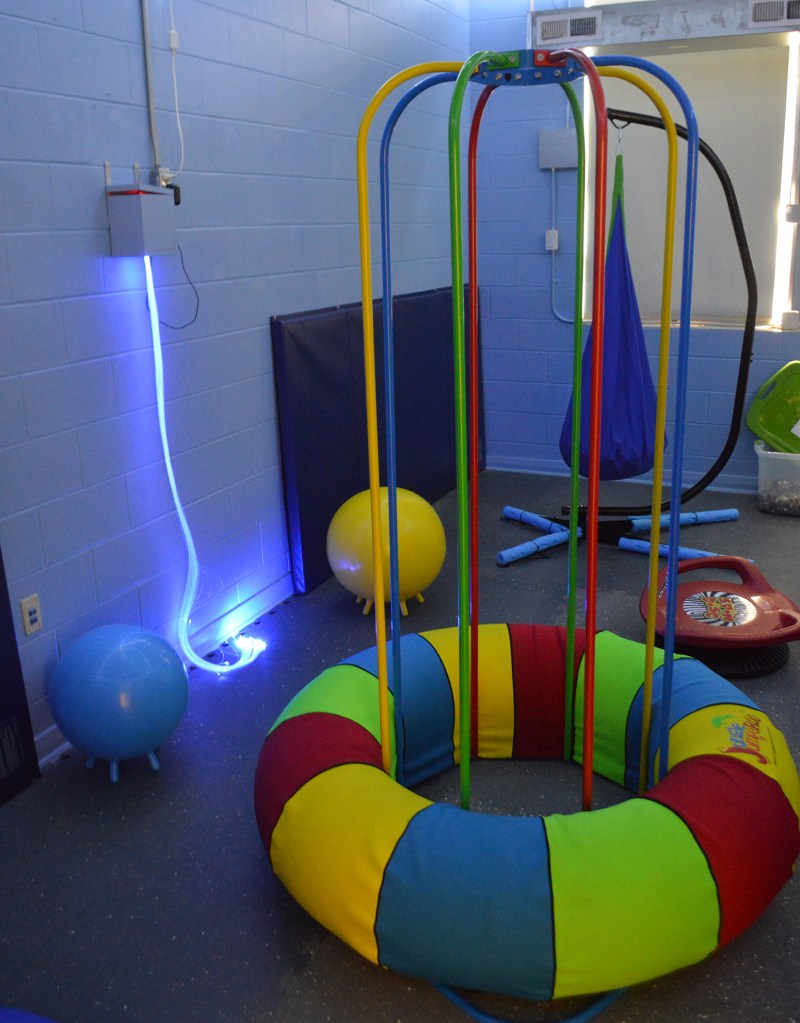ROOM TO MOVE: Rotarians get glimpse of how donation helps students
Published 6:45 am Wednesday, March 29, 2017

- A jungle gym-like feature with multicolored bars and a soft, bouncy surface is a big hit in Cowart Elementary School's new sensory room.
Members of the Athens Rotary Club on Tuesday were able to see firsthand how a recent donation is making a difference in the lives of elementary school students.
Club President Bill Ward and several members celebrated the opening of Cowart Elementary School’s new sensory room, which was funded through a $3,000 donation from the club. It took about eight weeks to complete the room, which opened to students two weeks ago.
Trending
Project volunteer Stacey Givens, who helped organize similar rooms at Athens Intermediate School and Brookhill and Julian Newman elementary schools, showed members how their money was spent as she and children demonstrated how the room works.
Sensory rooms hold a special significance for Givens, whose son Brooks has autism. He is a student at Brookhill Elementary, which opened a sensory room last year. She explained having the room at her son’s school has made “a world of difference” in his life.
For those who have never heard of a sensory room, it provides a short — and sometimes needed — break from class for children who are autistic or who have sensory needs. The room features a mix of activities designed to calm anxious children, while other features allow children to bounce, jump, rock and swing.
There is a thought to all the features in the room. Threads of fiber optic lights change colors and provide positive stimulation. Two brightly colored bubble lamps light an adjacent corner. On a shelf next to those, a sound machine broadcasts the sound of bubbling water. For children who want to play in silence, noise-canceling headphones are available.
On the floor, a spin disc allows children to lay on their back and spin around in one place. There’s also a large tunnel to crawl through. A jungle gym-like feature allows them to hold on to multicolored bars while jumping up and down on a padded surface.
The walls are colored a grayish-blue because Givens said it’s a calming color. No fluorescent lights are used because she explained they emit a hum that can create more anxiety for children.
Trending
“It makes me happy and makes me calm down and gets all the energy out,” said Luke Sanders, a fourth-grader at Cowart. “It helps me concentrate when I work.”
First-grader Clay Klein said not only does the sensory room calm him down, but it helped him “learn better.”
“I didn’t know what the sensory room was, but when I’ve gone into it, it’s been pretty good for me,” he said.
Givens said that’s the general idea of the sensory rooms. She explained that children sometimes get anxious when they have to sit for an hour and a half or more. The sensory room allows them to receive stimulation from activities or be calmed by other devices.
“They can come do all this wriggling and fidgeting around in here, but when they go back to the classroom, we want them to focus,” Givens said. “They come in here to get away from the stress and anxiety.”
Children who have a greater need for the room are on a sensory room schedule. An aide will come collect a student and take them to the room for a brief visit. The visits are timed with a large wall clock the students can watch. When their time is almost up, they are encouraged to do a soothing activity before they have to leave so they can return to the classroom more calm.
If a student needs to visit the room because he or she is overly anxious, the teacher can buzz the office and request an aide to collect the student and take him or her to the room.
Givens said the room could accommodate five-to-six children, but that would not be an ideal scenario. If there are too many, she said, the children will all want to participate in the same activities instead of what he or she needs individually.
“The room is very beneficial to our students and teachers,” said Kim Moore, principal of Cowart Elementary School. “Our teachers are more mindful of the behaviors in the classroom and know just because a student is spinning around, it doesn’t mean the student has a behavior problem. It’s made a huge impact on our school and our students and teachers.”





